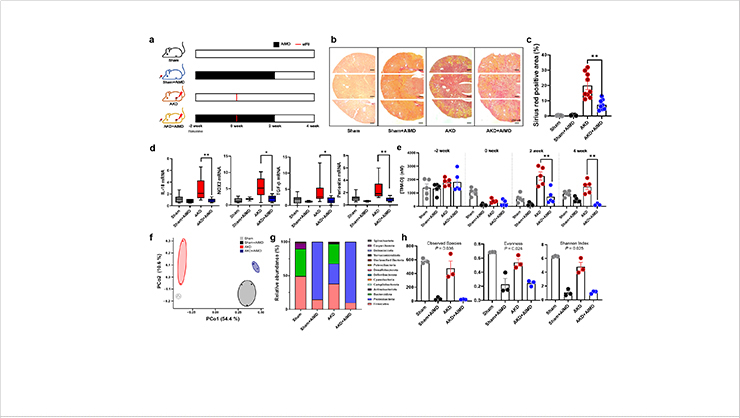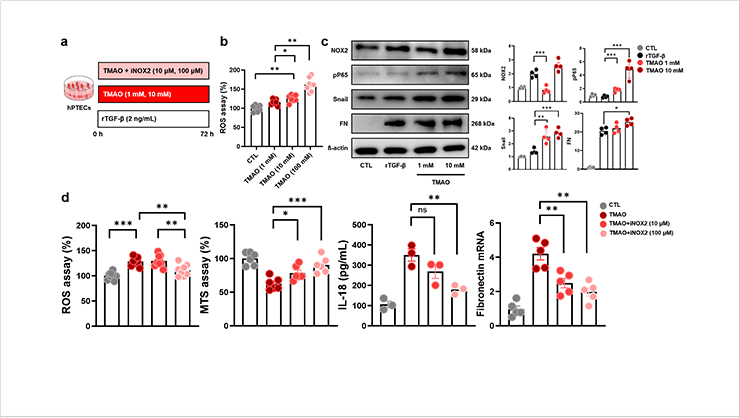Representative Research Publications
Demonstration of the possibility of TMAO regulation and improvement of acute kidney injury to chroni 2024 > Representative Research Publications > Research Results Home
Demonstration of the possibility of TMAO regulation and improvement of acute kidney injury to chronic kidney disease transition through gut microbiota alteration
- Kidney International/ 2024. 6.
- Jeonghwan Lee, Jinhaeng Lee, Kyuhong Kim(First author), Jung Pyo Lee, Geum-Sook Hwang, Seung Hee Yang(Corresponding author)
Research Summary
In order to improve the prognosis of kidney disease patients, it is very important to prevent and properly treat the conversion to chronic kidney disease (CKD) after acute kidney injury (AKI), but studies on pathophysiological factors and treatment methods are still lacking.
In this research, plasma metabolomics from patients who underwent continuous renal replacement therapy (CRRT) for AKI confirmed that an increase in trimethylamine-N-oxide (TMAO) concentration was significantly related to worsening renal function. In addition, it was confirmed that kidney tissue damage, oxidative damage, tissue inflammation, and cell death were significantly increased along with an increase in the production of TMAO in the mouse AKI-to-CKD transition model, and when antibiotics were administered to mice to induce changes in the intestinal microbiota, it was possible to suppress an increase in the concentration of TMAO along with a decrease in the intestinal microbiota associated with TMAO production.
When TMAO was administered to renal tubular cells, an increase in reactive oxygen species (ROS) and induction of renal cell fibrosis reaction were confirmed. Afterwards, it was confirmed that when the ROS generation inhibitor was treated, the production of ROS was reduced, and cell fibrosis, cell death, and inflammatory reactions by TMAO concentration decrease.
In the absence of kidney disease-specific therapeutic drugs, this study is expected to make important progress in demonstrating the mechanisms and treatment of acute kidney disease, given that it identifies the TMAO metabolite that mediates the progression to CKD after AKI, and proposes effective treatment methods such as intestinal microbial control or inhibitors of ROS generating factors.
Related Figures
 Fig. 1 Changes in renal injury, TMAO concentration, and intestinal microbial environment following antibiotic administration in a mouse model
Fig. 1 Changes in renal injury, TMAO concentration, and intestinal microbial environment following antibiotic administration in a mouse model
 Fig. 2 Changes in ROS and fibrosis markers following TMAO and ROS generation inhibitor treatment in renal tubular cells
Fig. 2 Changes in ROS and fibrosis markers following TMAO and ROS generation inhibitor treatment in renal tubular cells



